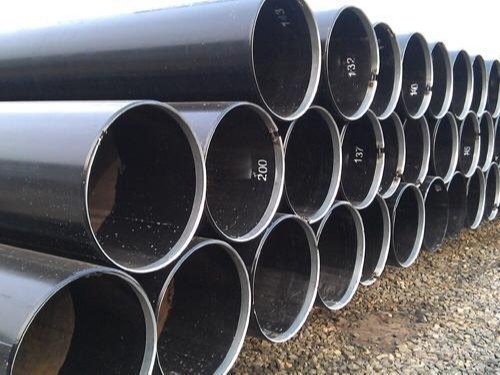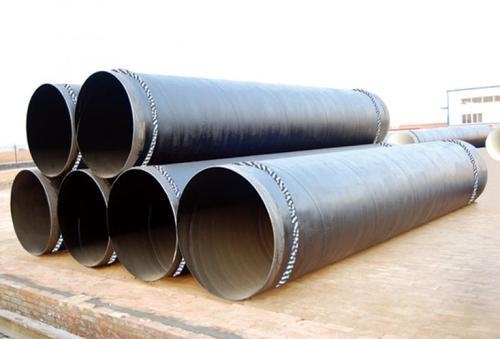Through the Pipeline: Exploring the World of HSAW Pipes
HSAW (Helical Submerged Arc Welded) pipes, also known as SAWH steel pipes, are a prominent type of steel pipe used primarily in high-demand applications due to their robust construction and exceptional reliability. Manufactured through the Submerged Arc Welding process, these pipes feature a helical seam that significantly enhances their strength and allows for greater load-bearing capabilities. The versatility of HSAW pipes makes them ideal for critical sectors such as petroleum and natural gas extraction, as well as urban infrastructure projects including water supply and drainage systems. Their ability to withstand high pressures and harsh environmental conditions underscores their importance in these vital industries, ensuring efficient and safe conveyance of fluids and gases.
Understanding HSAW Pipes
Historical Background
Helical Submerged Arc Welded (HSAW) pipes have a storied history in industrial applications, evolving through technological advancements in welding and materials science. Originating in the mid-20th century, these pipes quickly became favored in large-scale pipeline projects due to their robustness and efficiency in production.
Manufacturing Process
- Raw Materials
The manufacturing of HSAW pipes begins with high-grade steel coil, typically made from carbon steel or low-alloy steels. The choice of material depends on the intended use of the pipe, considering factors like strength requirements and environmental conditions.
- Forming the Pipe
Steel coils are unrolled and flattened into strips. These strips are then helically wound to form a continuous spiral, which creates the cylindrical shape of the pipe. This method allows for greater flexibility in pipe diameter and length.
- Welding
Submerged Arc Welding (SAW) is employed to fuse the spiral seam, ensuring deep penetration and strong welds. This process occurs under a blanket of flux, which protects the weld zone from atmospheric contamination and improves the structural integrity of the pipe.
- Inspection and Testing
After welding, HSAW pipes undergo rigorous testing to ensure they meet industry standards and specifications. This includes chemical and mechanical tests, hydrostatic testing for strength and leaks, X-ray inspections for weld quality, and various physical trials like bending and flattening tests.
Advantages of HSAW Pipes
HSAW pipes offer several advantages over other types of pipes. Their helical structure allows for high pressure and stress tolerance, making them suitable for heavy-duty applications. They are also cost-effective in terms of long-distance pipeline installation due to fewer joints and faster laying speeds.
Comparison with Other Pipe Manufacturing Methods
Compared to Longitudinally Submerged Arc Welded (LSAW) pipes, HSAW pipes are generally more cost-effective and allow for larger diameters and longer lengths. However, LSAW pipes may offer better roundness and straightness, which is critical for certain applications. HSAW pipes compete favorably in terms of strength and flexibility when compared to ERW (Electric Resistance Welded) pipes.
Cangzhou Shenlong SAWH Steel Pipe Types
Cangzhou Shenlong offers various types of SAWH steel pipes, including SSAW steel pipes, HFW steel line pipes, and galvanized spiral welded steel pipes. Their pipes come with a 3PE coating for corrosion resistance and are available in diameters from 219mm to 3000mm, wall thicknesses from 4mm to 25.4mm, and lengths from 6m to 28m.
SAWH Steel Pipe Specification
The pipes are rigorously tested for quality assurance, including chemical component analysis, mechanical properties like tensile strength, yield strength, and elongation, as well as technical properties such as flattening, bending, and impact tests. They undergo exterior size inspection, hydrostatic testing, and X-ray testing to ensure structural integrity. Each pipe comes with a Mill Test Certificate EN 10204/3.1B, and third-party inspections from entities like SGS, BV, and Lloyds are available.
Applications of HSAW Pipes
Oil and Gas Industry
- Transportation of Crude Oil and Natural Gas
HSAW pipes are extensively used for the long-distance transportation of oil and natural gas. Their high strength and durability make them ideal for withstanding the high pressures involved in pumping resources from extraction sites to refineries and storage facilities.
- Offshore Applications
In offshore environments, HSAW pipes are preferred for their structural integrity and resistance to harsh conditions. They are used in constructing underwater pipelines that are critical for transporting oil and gas from offshore drilling rigs to onshore facilities.
Water Transmission
These pipes play a vital role in water supply systems, especially for urban and agricultural needs. Their capacity to handle large volumes makes them suitable for main water supply lines and irrigation systems.
Infrastructure Development
HSAW pipes are integral to structural components in bridges and buildings due to their ability to support heavy loads. They are also used in constructing piling pipes and as structural support in large-scale construction projects.
Other Industrial Uses
These pipes are also employed in industries such as mining for conveyor rollers and in the chemical industry for fluid transfer lines, demonstrating their versatility across various sectors.
Challenges and Innovations
Environmental Considerations
The production and use of HSAW pipes come with environmental challenges, including energy consumption and CO2 emissions during manufacturing. The industry is increasingly adopting more sustainable practices and materials to mitigate these impacts.
Corrosion Protection
Corrosion remains a major concern, especially in harsh environments like marine or highly corrosive industrial applications. Innovations in coating technologies, such as 3PE (triple-layer polyethylene) coating, have significantly enhanced the lifespan and reliability of these pipes.
Pipeline Integrity and Safety
Maintaining the integrity of pipelines is crucial to preventing leaks and failures. Continuous monitoring technologies, including smart sensors and IoT solutions, are being integrated to provide real-time data on pipeline health.
Innovations in HSAW Technology
Advancements in welding techniques and materials engineering continue to improve the quality and efficiency of HSAW pipes. Automated and robotic welding systems have also been developed to ensure higher precision and consistency in welds.
Case Studies
Major Projects Utilizing HSAW Pipes
- Transnational Pipelines
HSAW pipes have been used in several high-profile transnational pipeline projects, enabling efficient cross-border transport of oil and natural gas. These pipelines are essential for the energy security of nations and require high-quality pipes capable of withstanding varied environmental conditions.
- Large-scale Infrastructure Development
Numerous infrastructure projects around the world utilize HSAW pipes for their structural strength and flexibility. Examples include major bridge constructions and high-rise buildings where durability and safety are paramount.
Success Stories and Lessons Learned
Case studies from completed projects often highlight the effectiveness of HSAW pipes in challenging applications. Lessons learned from these projects drive ongoing improvements in pipe manufacturing and application techniques.
Future Outlook
Emerging Technologies and Trends
The future of HSAW pipes is closely tied to advancements in material science and manufacturing technologies. Emerging trends include the use of high-strength, low-alloy materials and the increasing application of nanotechnology and surface treatment technologies to enhance performance.
Growth Opportunities and Challenges
The global demand for HSAW pipes is expected to grow, driven by expanding infrastructure needs and the energy sector. However, this growth comes with challenges, such as the need for improved sustainability and adaptation to global trade dynamics.
Potential Impacts of Regulatory Changes
Regulatory frameworks concerning environmental protection and safety standards are tightening worldwide. These changes will impact the HSAW pipe industry, necessitating adaptations in manufacturing processes and product specifications to comply with new regulations.
Closing Thoughts
HSAW pipes are foundational to critical industries, serving as a backbone for transportation systems in oil and gas, water management, and large-scale infrastructure projects. Their ability to withstand demanding conditions, coupled with innovations in materials and manufacturing processes, ensure their continued relevance and reliability. As the industry navigates environmental challenges and regulatory changes, the future of HSAW pipes appears robust, driven by technological advances and global demand. Embracing sustainable practices and continuous improvement in production and application will be key to meeting future needs and maintaining the integrity of these essential components in global infrastructure and industry.






